- Learning time
- 40 minutes
- First play time
- 150 minutes
878: Vikings – Invasion of England
Designed by: Beau Beckett,Dave Kimmel,Jeph Stahl
The title pretty much gives it away: 878: Vikings – Invasion of England can be played by two to four players, but it’s always the invading vikings pitching themselves against the defending English, with up to two people on each side.
The board shows a map of England as it was at the time; divided into shires and at the start of the game, populated by a number of English units in the form of Thegn and Housecarl (green and blue, if you prefer). In each round, the Viking team will turn over a new Viking Leader who will arrive via ship, bringing a number of Norsemen and Beserkers (black and red) with him. Each leader has a leader card showing how many followers he brings with him, which saves you the trouble of moving lots of pieces around the board – wherever the leader is in England, his followers will be with him.
The four factions – two English, two Viking – each have their own turn during a round, where they follow a number of phases: Recruitment (adding new units to the board or leader card) Leader phase (the Leader moves, and any resulting battles with the English are resolved), Movement phase (armies without a leader can move) and Battle phase (armies without a leader battle). How many armies you may move and how far they can go is decided by playing a movement card – you’ll always have at least one, and possibly some helpful Event cards to play as well, from your hand of three cards. As 878 is, broadly speaking, an epic punch-up, the battle phases are key to the outcome of the game. Each player can roll a certain number of dice in battle (defender goes first) the results of which enforce casualties to the opposing side, tactical retreats and/or fleeing in terror. Fled units can be returned to your armies during the next recruitment phase, but obviously dead units cannot – they’re dead, as well as reluctant.
The English have a couple of secret weapons – when they are defending a city, they can summon the Fyrd to fight with them, who represent the locals pressed into service. As fighters, they’re pretty feeble, but their numbers can help. The other help for the English is the appearance of King Alfred at round five – their very own leader! He can have a pivotal role in swinging the war away from the Vikings, if your judgement is shrewd and luck is with you.
The Vikings ultimate goal is to gain control of 14 shires containing cities. When they take control of a city shire, they add a control marker to show it is now under Viking rule. The English can win by ejecting the Vikings from every single city shire on the board – not easy when a new Viking leader comes barreling across the country in each new round. But there is another way the game can end as well: all factions have a single Treaty card mixed into their deck, and these can be played once they are in your hand. They don’t have an immediate effect, but if at the end of round five, six, or seven, both treaty cards have been played by either side, the game is now over and the winner is decided by checking the control marker track: if the Vikings control nine or more city shires, they win. If they control less, the English do!
The guru's verdict
-
Take That!
Take That!
The game is a series of battles, so the Take That quotient is rather high.
-
Fidget Factor!
Fidget Factor!
Low to moderate. You only ever have three cards to choose from on your turn.
-
Brain Burn!
Brain Burn!
The main crunching here is focused on where to move on the map, but there's a few variables to consider beyond the chance rolling of the dice. Berserkers are stronger than Norsemen, Housecarl are stronger than Thegn. The amount of Fyrd the English can call on is finite and if you're considering calling a Treaty you want to be sure you remain in a strong position to benefit from ending the game this way.
-
Again Again!
Again Again!
Lots of variety here from the asymmetric play (Vikings attack; English counter) to the dice rolling, to the different strategies afforded by the game. As Vikings you can try and blitz your way to a fast victory - and leave your positions weak - or take a more cautious approach, where you are harder to attack but progress is slower. As English there's less variation because your game is reactive, but there are still options. Cede some cities to reinforce elsewhere? Or keep the Vikings on their toes but counter-punching at every opportunity? As well as all that, the rulebook offers some specific scenarios to try out.

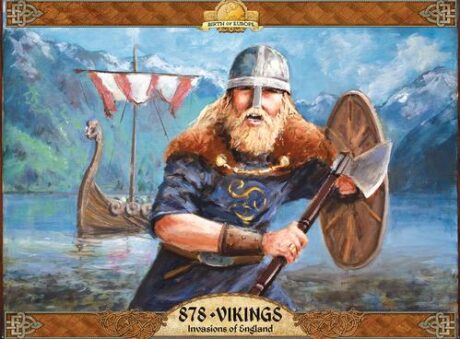

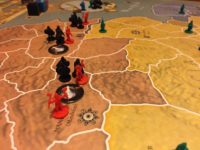

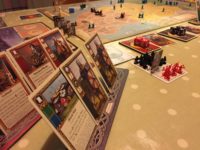






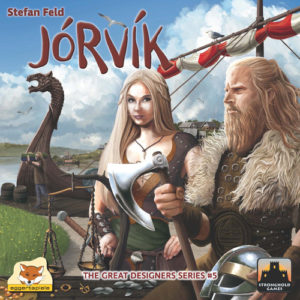
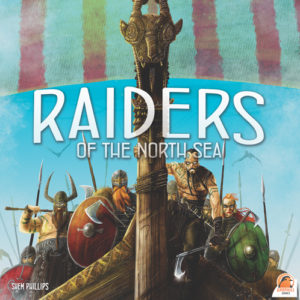

Sam says
Generally I'm not a person who longs for direct confrontation in play (or life) but some games seem to do it better than others. Arbitrary Take That aspects in certain games I can find really tedious, but like its predecessor 1812: The Invasion of Canada, 878 Vikings handles it well. There's a strong theme, and a narrative, and for all that the game can sometimes come down to a single roll of a die, over the course of the war the luck is balanced out by tactical play. For me, that makes it more engaging than some games where you basically take turns to shoot each other with ever more fiddly caveats and special exceptions. Even the turn order here has a palpable and unpredictable effect, as faction cubes are drawn from a bag to decide which faction goes next in each round. If you like the combative aspect 878 Vikings scratches that itch whilst remaining, compared to most war games, a comparatively brief and breezy experience - we've put down 90 mins for regular play, but if there are only two players it's going to be even less than that.
...We've not played them, but the same game system drives the other historical games by the same publisher: 1775: Rebellion and 1754: Conquest- The French and Indian War